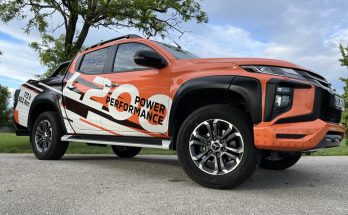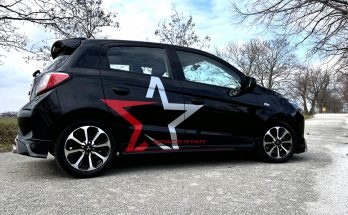Electric cars are being discussed everywhere today… Tesla occupies the front pages, Nissan considers its Leaf to be the corporate future, Peugeot abandoned the concept of diesel hybrids, Volvo presents the latest mild hybrids as something that has never been here before. All of these have long-standing reputations for technological innovation and R&D budgets that Mitsubishi engineers can only dream of. And yet…
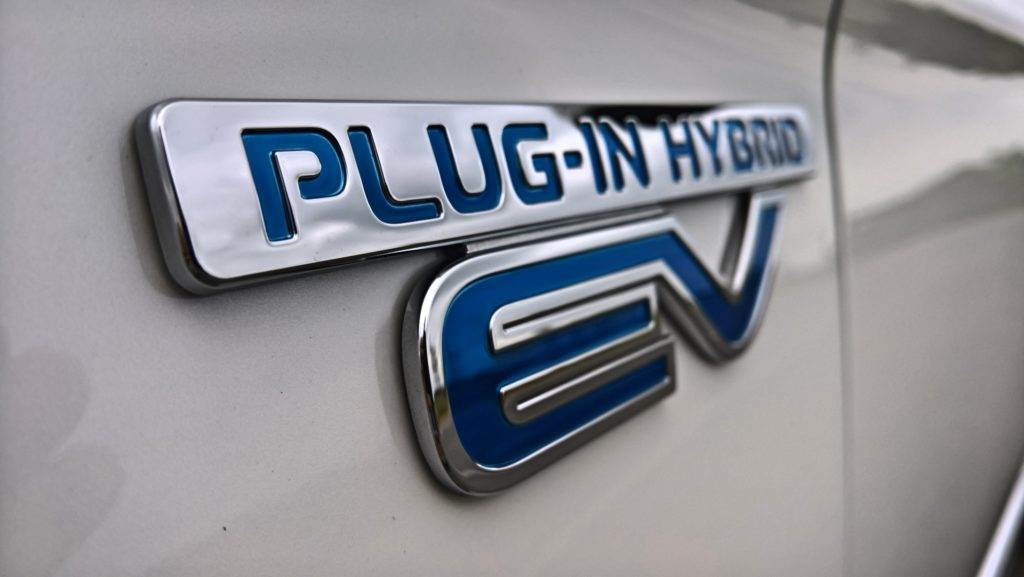
Despite this, Mitsubishi's current Outlander PHEV is not only the most popular plug-in hybrid SUV, but also the best-selling plug-in hybrid of any kind in Europe, with more than 125,000 units sold on the old continent since its launch in 2013.
Why is that so? There are three main reasons for this:
- First of all – it's an SUV and everyone loves an SUV these days – probably you too. And if not, then the trend dictates that it must be so soon. And it's a large SUV with four-wheel drive. One of the largest in its category. So a clear choice for the family.
- Second, it is a hybrid plug-in, which means (probably in the distant future in Slovakia) also possible tax breaks, entrances to the centers of European metropolises where a normal car will not look and the warm feeling that you have done a good thing for the environment.
- And finally, thirdly – nothing but the price. Paying just over 40,000 for a full-fledged plug-in hybrid SUV loaded with all assistants is great. For example, all German PHEV SUVs are much larger and more expensive, and not nearly as good value for money. Volvo offers the closest model to the Outlander – the XC60 – with a price tag starting at 65,000. Just like Land Rover, whose only PHEV is the Range Rover, and there we are talking about completely different starting sums.

You could say the Outlander PHEV has been 'facelifted' for 2019 too – but that would be inaccurate, as apart from a new pair of LED headlights and different alloy wheels, it looks exactly the same as the car it replaces. The same story can be found inside. Just like the old model with all its strengths but also its shortcomings. Mitsubishi claims that customers are fine with this and are not asking for the upgrade. You can find all the news on the Outlander described in our review here: Mitsubishi Outlander – The Last Samurai
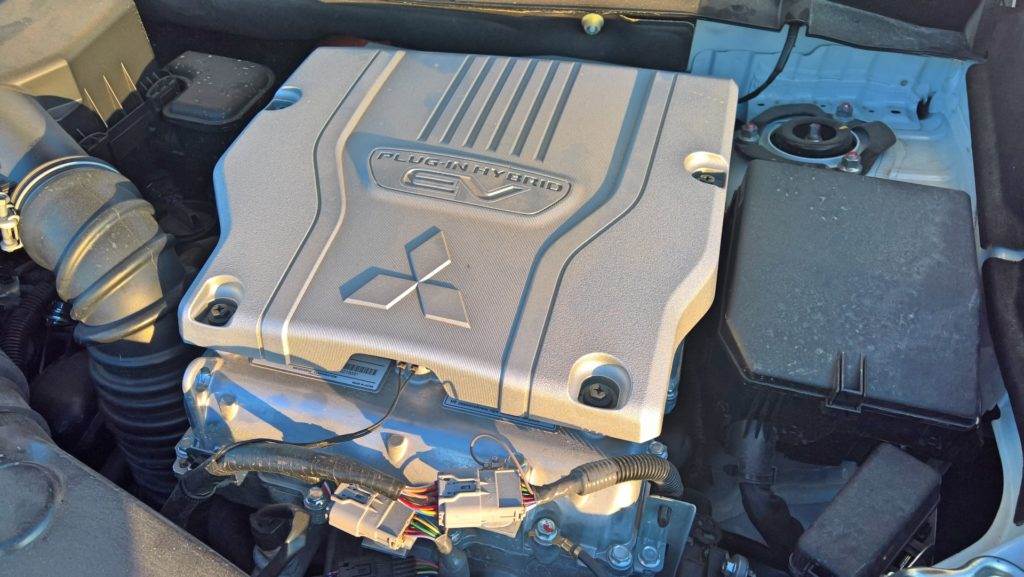
Novelty and technological finesse are actually buried deep inside. A 2.4-liter four-cylinder Atkinson cycle engine replaces the breathless old 2.0-liter engine, improving economy and power gains. The electric motor mounted on the rear axle is also new and more powerful than the one it replaces. The generator and battery capacity are also new. The steering has been reworked, the brakes, suspension, all-wheel drive and hybrid control systems have all been revised or improved. And they are usually better. There is much more new than meets the eye.
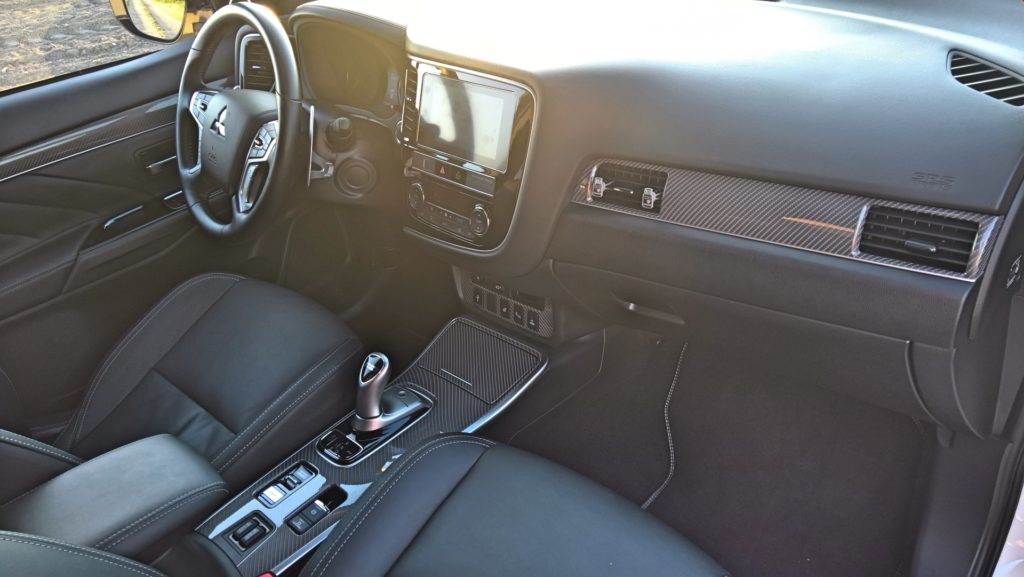
Inside, it's the same as it has been for the last few years – since the last facelift in 2016. Unlike the normal Outlander, you can't have seven seats here because the batteries are in the back. This is the only sacrifice for being a PHEV instead of a classic concept. So the luggage space is still a reasonable 463 liters and the back bench is spacious enough for the size of the car. The leather seats have been redesigned and are very comfortable to sit in. The driving position is high and mostly comfortable – for the front passenger, however, the height and inclination of the seat are still not adjustable.
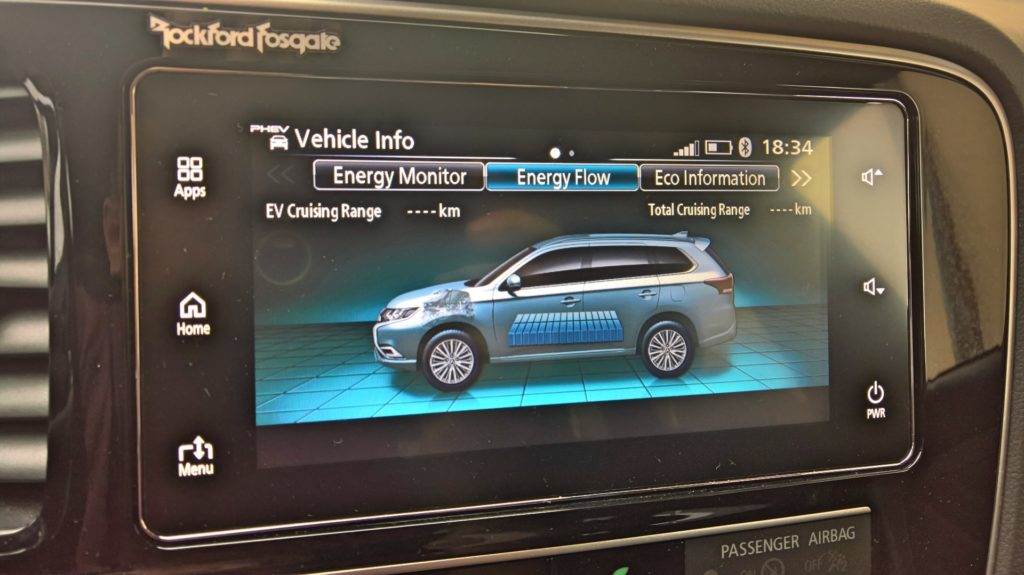
Again, we won't find navigation here – not even as an optional extra. Personally, it doesn't bother me, after all, most people use their navigation on their phones, either in the cradle or directly via Apple CarPlay or Android Auto. Both technologies are present and functional in Outlander as well. The screen is smaller, with a fine resolution, but it would deserve a software upgrade. At least for PHEV. Considering the technology the car offers, it's a bit archaic. When it comes to the design and arrangement of the controls in the interior, you can feel that the car is a few years old and today's outfit is completely different. None of the plastics are particularly satisfying to the touch, but they're not offensive, they're well made and undoubtedly durable enough to withstand rough handling.
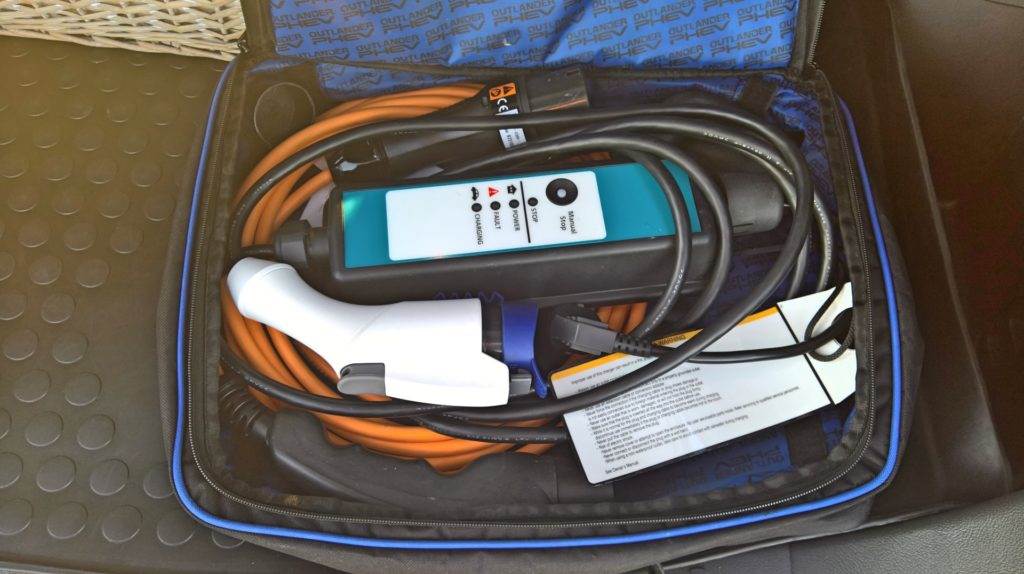
But let's get back to the powertrain, because that's what's new and where Mitsubishi has spent considerable development resources. The new four-cylinder petrol engine is capable of switching between conventional combustion cycles – Otto for power and Atkinson for efficiency. The displacement is 2.4 liters, which results in a greater power of 119 horsepower and torque. It drives the Outlander's front axle through something called a "Multimode eTransmission" (definitely not a CVT, but it looks a bit like one anyway), but most of the time that transmission is either disconnected from the wheels or acting as a generator to charge the 13.8kWh battery that's living its life. quiet life under the boot floor. This battery powers two electric motors – one on each axle, for variable all-wheel drive. Although there is no mechanical connection between them. The motor of the rear axle is new and has a power of 70 kW, which represents an increase of 10%.
All this resulted in better acceleration by half a second from 0-100 km/h and increased the speed at which the Outlander can drive on electric power to 135 km/h. The new, stricter WLTP fuel economy tests suggest CO2 output is just 45g/km when driving in hybrid mode.
The term "maximum power" has only a minor meaning in this vehicle, because the gasoline engine + front electric motor + rear electric motor + power generator never engage together at top speed. Such a combination never occurs under real-world conditions, as the PHEV system always optimizes the combination of drive and drive modes with an emphasis on electric drive – driving / charging – and low emissions.

After starting, the electric vehicle (EV) mode is automatically selected, while the stated electric range of 45 km (according to the WLTP methodology) is never a continuous section. The PHEV system, on the other hand, constantly switches between driving and charging mode, especially during SAVE mode.
Mitsubishi Motors' PHEV drive system is so inherently electric that, thanks to the mapping of the operating system, it is possible to move for 89 days on electricity alone. The claimed range of 45 km WLTP is fully sufficient for the needs of most people in their daily commute. Subsequently, on the 90th day, a warning light will light up on the instrument panel and the PHEV operating system will automatically start the spark-ignition engine to protect the fuel injection system and to renew the aging fuel.

Speaking of modes, there are more than enough of them, and at first glance it might seem like overkill. The EV button turns off the use of the petrol engine if you don't really need it, the largely pointless Sport mode sharpens throttle response and hard-wires the petrol engine, and Eco mode does the opposite. The all-wheel drive system also has some "shutter" modes – snow and lock – and the drivetrain has three more – Normal, Save and Charge. The Save mode keeps the battery charged, for example, if your journey ends in a city and you want to slip through it purely on electricity. Charging deploys the petrol unit and you guessed it – you charge the batteries. This is convenient if, say, you don't have access to any kind of charging point (a standard 230V charger charges the battery for about 4-5 hours). Then there are six levels of regenerative braking, chosen between moving the gear selector from D to B or clicking paddles behind the steering wheel. It looks like a technical university, but in practice it is much simpler…
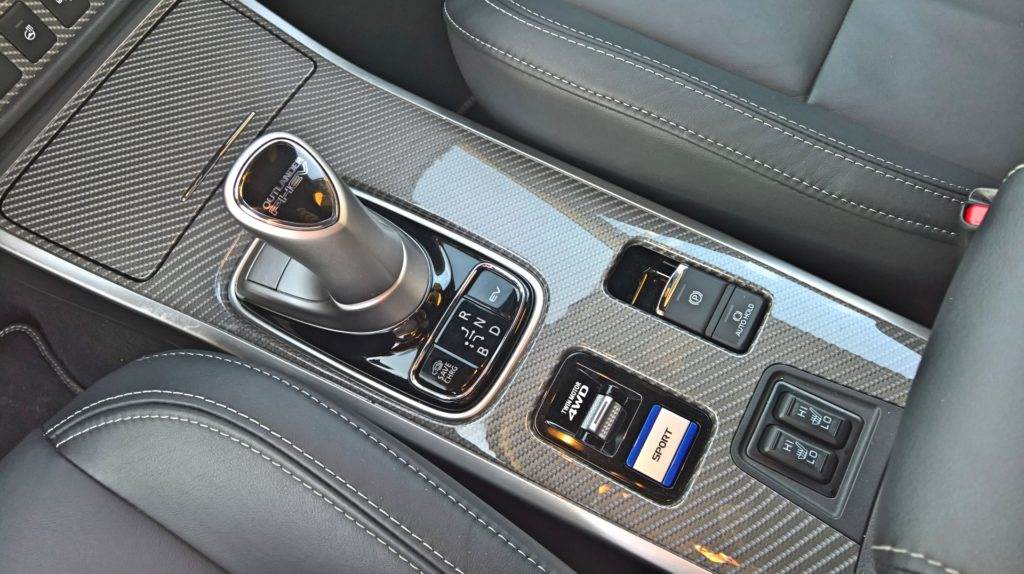
As for the chassis, the new, redesigned front and rear shock absorbers should drive more smoothly. They're trying to do that, but it's still not as it should be on an SUV. Unlike the classic Outlander, the entire chassis felt rubbery and without feedback. However, for the total weight, I understand. Not that it should be a sports car, but we're so used to SUVs driving like regular smaller cars that the Outlander simply veers off course. Because it is still a full-fledged 4×4 SUV and not a crossover on a small car platform. Thanks to the S-AWC electronic modes, it can easily handle any normal terrain or a trip to a chalet in the backcountry.
Mitsubishi has worked hard to ensure that, for example, you can feel the brakes just like on a classic car. You won't even feel the difference between braking with engine regeneration and classic braking with jaws. The car manages itself.
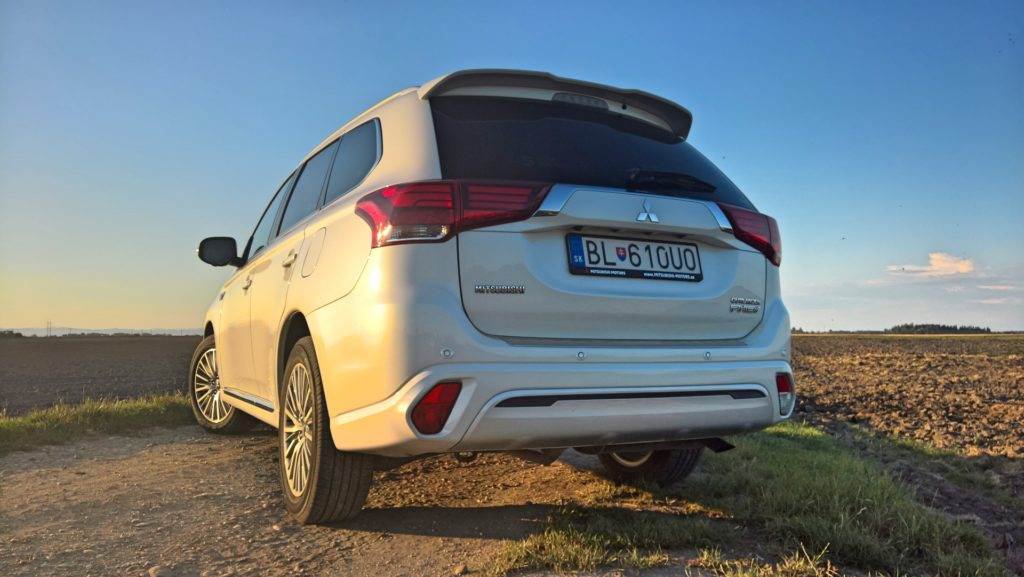
On the highway, the car is exceptionally quiet – road noise is suppressed very decently, and considering the size and height of the car, wind noise around the rear-view mirrors is surprisingly small. On district roads, you mostly drive in electric mode, sometimes the gasoline engine is connected when there is a steep climb or when you need to overtake. The crew will appreciate it, because there is enough space everywhere, storage spaces and most importantly – silence. Whisper-level conversation – this is how I imagine traveling.
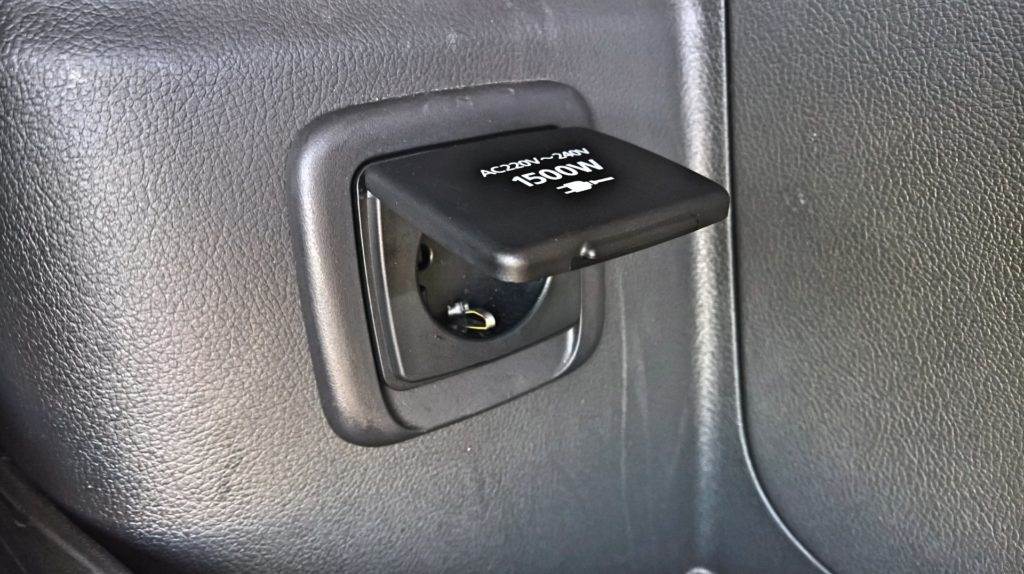
Life with a PHEV vehicle is a little different from the classic "comfortable" operation of a gasoline or diesel car. Charging takes over four hours from a regular 230V / 16amp household socket. On the CHAdeMO charger, you give the battery 80% capacity in 25 minutes and then wait again until it slowly reaches 100%. The Outlander PHEV can also send power back to the grid. The electrical installation includes two 1,500 W electrical sockets (one behind the center panel available for rear passengers and another in the trunk) for connecting outdoor equipment to 230 V wherever there is no access to the electricity distribution. A fully charged and refueled Outlander can even power an ordinary family home for about 10 days when stationary (it is compatible with the V2H system – smart grid). The residents of Japan could (unfortunately) experience this extraordinary advantage in practice when struck by natural disasters. In the event of a blackout, the neighbors will love you and you can make them a coffee directly from the trunk…
The Outlander PHEV combines economy resulting from the use of top technologies, universal versatility, typical Japanese quality and ecological parameters, all in the popular SUV format. Thumbs up Mitsubishi – this is how the future is created with minimal costs…
| Technical specifications | Mitsubishi Outlander PHEV MY19 |
| Engine type: | Spark plug |
| Cylinders / valves: | 4 / 16 |
| Displacement (ccm): | 2360 |
| Highest power (kW(k) / rpm) | 99 (135) / 4500 |
| The highest twist. torque (Nm / rpm): | 211 / 4500 |
| The highest power of the 1st electric motor (kW(k) / rev/min) | 60 (82) / 0+ |
| The highest twist. moment 1. el.m. (Nm / rpm): | 137 / 0+ |
| The highest power of the 2nd electric motor (kW(k) / rev/min) | 70 (95) / 0+ |
| The highest twist. moment 2. el.m. (Nm / rpm): | 195 / 0+ |
| Battery capacity (kWh): | 13.8 |
| Range in EV mode – maximum (km): | 50 |
| Gearbox: | Multimode eTransmission |
| Acceleration 0 – 100 km/h (s): | 10.5 |
| Combined consumption – WLTP (l/100 km): | 2.0 |
[rl_gallery id=”5795″]


